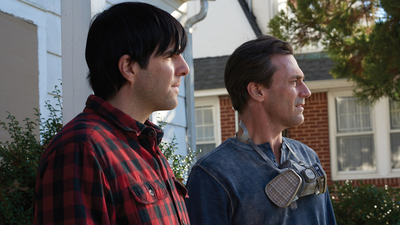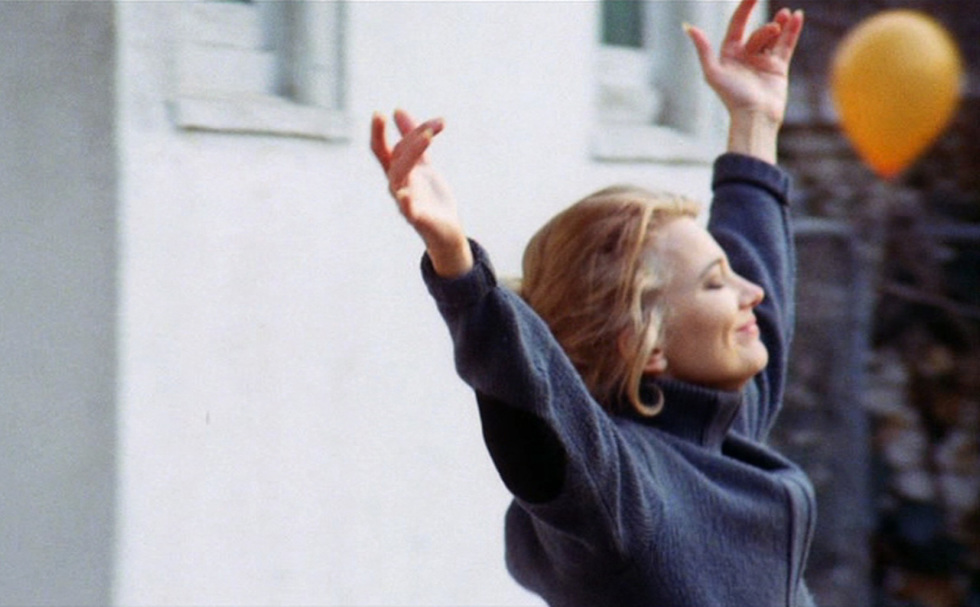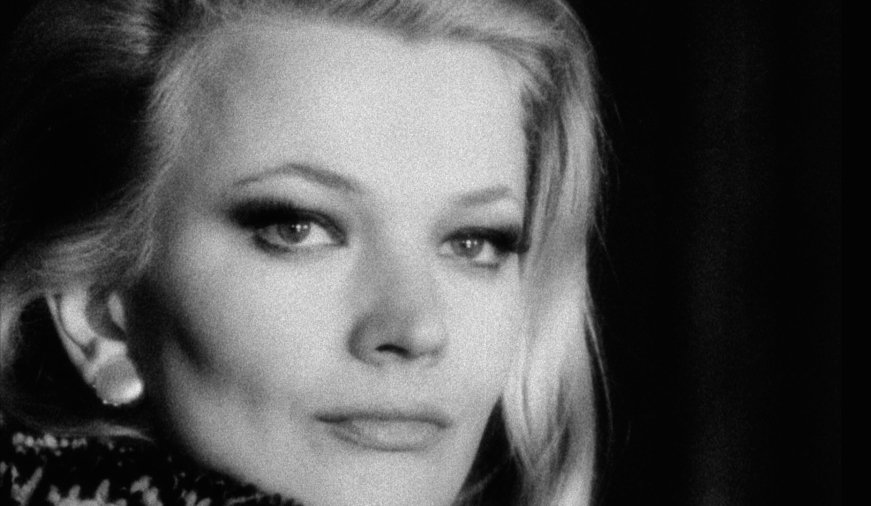
BY MATTHEW ENG |
It’s About Damn Time Gena Rowlands Got An Oscar
One of our greatest living screen actresses finally receives the long-overdue Academy Award that has inexplicably eluded her for over half a century.

This Saturday, 85-year-old acting icon Gena Rowlands will receive one of the most amply-deserved Honorary Oscars of all time at the Academy’s annual Governors Awards ceremony, at long last resolving one of the gravest injustices in the history of American cinema.
In truth, the jarringly un-Oscared Rowlands deserves a haul truck full of Oscars in recompense for the two piddling nominations and zero wins the actress has received over the course of one of the most magnificent movie careers of the 20th-century.
Never mind that you won’t actually be able to see this glorious moment as it happens. The bestowal of the Honorary Academy Awards used to occur on the actual Oscars broadcasts in moving, tributary segments that usually occurred mid-show. But somewhere along the way, the telecast producers bizarrely assumed that viewers would rather watch a curiously robotic tribute to Chicago or one of Neil Patrick Harris’s unbearable magic tricks than see icons of cinema like Lauren Bacall, Jean-Luc Godard, Hayao Miyazaki, and D.A. Pennebaker accept their immensely worthy statues…
I digress, but there are nonetheless scores of movie lovers like myself who have been waiting decades to see Rowlands get her hands on an Oscar, because, when it comes down to it, Gena Rowlands has delivered the single greatest screen performance of all time...

But, first, some background.
A Working Actress Develops Her Craft
Gena Rowlands began her acting career as a young and unbelievably beautiful Wisconsin co-ed transplanted to New York City in the early fifties to study drama at the American Academy of Dramatic Arts. During her studies, Rowlands met a fellow acting student named John Cassavetes, the man who would become both her creative and romantic soulmate. (According to Rowlands, Cassavetes told a friend, “I’m going to marry her,” upon seeing Rowlands for the first time in a class.) Cassavetes was obsessed with the films of Roberto Rossellini, Vittorio De Sica, and other Italian neo-realists, whose thematically sobering and stylistically unvarnished filmmaking manners he sought to emulate in films of his own one day.
Rowlands, on the other hand, only ever wanted to act. Upon completion of her studies, Rowlands joined the ranks of many a boards-treading, barnstorming East Coast-based actress. She did some Broadway and performed in repertory companies around the Northeast, but the bulk of her work came from syndicated, inoffensive TV serials like Top Secret and Middle of the Night. Rowlands nabbed guest bits then leading roles, until her star grew enough for her to land her first big screen role as Jose Ferrer’s wife in 1958’s The High Cost of Living, an insignificant and largely-forgotten comedy of working man misunderstandings that’s remembered today – when it’s remembered at all – as the film debut of an acting deity-in-the-making.
Except Rowlands didn’t immediately break out. And it’s arguable whether or not she was truly well-known at all during the entirety of the sixties. In fact, it would take fourteen years after High Cost for Rowlands to truly become a household name. In the meantime, Rowlands headed to Hollywood with Cassavetes and continued a steady stream of significant film work, which typically consisted of playing pityingly affectionate onlookers opposite matinee idols like Kirk Douglas (in Lonely Are the Brave) and Rock Hudson (in The Spiral Road), both released in 1962. By that point, Cassavetes had already helmed his seminal first film, Shadows, a tumbledown independent drama about the personal trials of an interracial group of New Yorkers that features a blink-and-miss-it cameo from Rowlands as “Woman in Nightclub Audience.” During the couple’s initial California years, Cassavetes would go on to act in Hollywood enterprises like 1967’s The Dirty Dozen, for which he was Oscar-nominated for Best Supporting Actor, and direct two films under the studio system, 1961’s jazz-laced drama Too Late Blues and the 1963 Judy Garland-comeback weepie A Child is Waiting, both of which Cassavetes would disclaim later on in his career.

Put off by the creative constraints and administrative pressures of studio moviemaking, Cassavetes returned to the freedom of his nickel-budgeted indie roots. In 1968, the same year he played his most memorable onscreen role as The World’s Worst Husband in Roman Polanski’s iconic Rosemary’s Baby, Cassavetes directed Faces (above), a deeply-nuanced and heavily-improvised drama about a middle-class couple who obliterate their marriage over the course of one reckless night. Faces is an unshakably stark and brilliantly confrontational landmark of cinéma vérité that also features what is probably the first truly great screen performance of Rowlands, who devastates as a caring hooker who gets jerked around by John Marley’s grotty, self-centered husband. Most of Faces’ plaudits, however, went to the wrenching, Oscar-nominated Lynn Carlin, which didn’t exactly dull the impact of Rowlands’ performance, but didn’t necessarily solidify her as the acting powerhouse whose unique but not fully utilized power seemed to be slowly bubbling in vehicle after vehicle – that is, until A Woman under the Influence.
It is misleading to say that nothing in Rowlands’ filmography prepared audiences for Mabel Longhetti, the tragically wholehearted, mentally-fraying housewife at the center of Cassavetes’ monumental counter-cinema masterpiece. In Faces, the bubbliness of Rowlands’ kittenish call girl looks increasingly like a sagging mask that barely covers this woman’s not-so-slowly mounting despair. But, really, this performance and the ones that comprised the advance stage of Rowlands’ career are just preludes. Woman is the real show, the curtain call, and everything else that follows.
A Woman You Need to Know
Not since Marlon Brando spontaneously scooped up Eva Marie Saint’s white glove in On the Waterfront has an entire style of acting emerged from the primal potency of one actor giving the performance of a lifetime. Brando’s Waterfront performance remains – indisputably – one of the greatest pieces of acting ever put on celluloid, but, frankly, and with all due respect to Stella Adler, Rowlands’ increasingly feels like the riskier and, in turn, braver tour de force.

The first time I watched Woman as a freshman in college, I was too cowed by the intramural volatility of the story and the stark impudence of Cassavetes’ filmmaking to really grasp – much less fully appreciate – the fine distinctions of Rowlands’ performance. I watched Woman again for only the second time this past August, prepared to submit to this daunting and emotionally draining cinematic experience all over again. I expected to be moved, but I didn’t expect to find the air practically snapped off from my lungs, my eyes welling, and my heart rapidly rising towards my throat as Mabel desperately attempts to ward off her loving but violently exasperated husband Nick (Peter Falk), the man she is intrinsically and heartbreakingly bound to, who has just enlisted the help of a doctor to carry her away to a mental ward in Woman’s indelibly traumatic mid-film breakdown.
Whereas Brando and his fellow Method peers worked from an intensely-studied system of immersed, in-the-moment motivation that had been founded decades earlier by Stanislavski, Rowlands almost single-handedly spearheaded her own movement of emotionally-outsized, psychologically-blazing being onscreen, a school of performance that only appears rash to those clocking Rowlands’ fiercely-flaunted kooks from a purely superficial vantage. Rowlands’ sublime acting is almost unprecedentedly id-driven: her beleaguered heroines operate from such deep reserves of need that can only be accessed by Rowlands, who doesn't just claim moments but wrestles with them in order to extract even tougher layers of authenticity. Stretching her rangy frame and malleable voice to their absolute breaking points, Rowlands displays this authenticity, this need, with all the forceful emotional fireworks that the screen could ever possibly contain. Her cornered and unstable characters act out not because Rowlands thinks they should, but because they need to in order to be heard, seen, and hopefully understood.
Woman was a watershed moment in American cinema, but also an unparalleled touchstone of American acting that was ecstatically received by critics’ groups and awards bodies. Cassavetes received a Best Director nomination at the 1974 Academy Awards and Rowlands herself landed an obvious spot on the greatest Best Actress roster of all time, only to see her no-brainer win handed to the admittedly marvelous Ellen Burstyn in Alice Doesn’t Live Here Anymore. In retrospect, was Rowlands’ wild embodiment perhaps too startling, the hopelessness of her mentally ill Mabel too unsettling for Academy voters, who eventually threw the majority of their support behind a durable, working-class single mother who is, truthfully, a much more heroic embodiment of seventies-era womanhood?

Whatever the case, Rowlands’ masterwork is the one that has become the criterion, an invaluable passage in American film history that will endure much longer than any one single Oscar race. She became, along with founding father Cassavetes, a lifelong and almost proudly ambassadorial proponent of indie cinema, at one point declaring, “I love independent filmmaking. I don't agree with a lot of it, but that's the point.”
After Woman, Rowlands made three more films with Cassavetes until his premature death in 1989 at the age of 59. And she happens to be staggering in all three of these projects: as the ruffled stage diva slipping through cracks that only we can detect in Opening Night, as the pissed-off gangster’s moll turned child’s protector and lipsticked avenger in Gloria (her second nomination), and as the poignantly ditzy wife-mother in Love Streams, in which Rowlands gives the most plaintive screwball performance of all time in Cassavetes’ skillful valentine to imperfect family bonds. All of these films are worth seeing, as is Woody Allen’s contemplative Another Woman, in which Rowlands drops the manic mannerisms altogether and burns a quietly captivating hole right through the screen as a philosophy professor whose assurance begins to stutter amid some unpleasant personal awakenings.
An Uncertain Legacy
But are people actually seeking out these films? Do modern-day moviegoers actually know Gena Rowlands and do cinephiles really recognize her as anything other than Cassavetes’ muse? Even in the prime stretch of her career, from the mid-seventies to mid-eighties, Rowlands was still working on TV, where she has picked up three Emmy wins and a bevy of nominations for telefilms like The Betty Ford Story and What If God Were the Sun? Meanwhile, the latter act of her film career has been filled with comparatively brisk entertainments that rarely afford Rowlands the centerpiece placement she merits.
There will always be work for Rowlands, even if it’s on spare episodes of Monk and NCIS, but do The Notebook’s scores of die-hard fans even realize that they’re watching a real-life acting goddess playing Rachel McAdams' older incarnation in those present-day scenes? When contemporary directors secure Rowlands’ involvement in their films, do they kiss the ground in gratitude that the genius who created the Holy Grail of movie acting has deemed them worthy of her time and talents? Could they, at the very least, provide her with something a little more challenging to play than another Beaming Old Lady or Wizened Keeper of Wisdom? It’s not that anyone expects Rowlands to deliver Mabel Longhetti, Part Deux. But is it too much to ask for a Grandma or an I’ll See You in My Dreams for Rowlands, if not an Amour or a 45 Years? Heaven knows Rowlands could handle it.

I don’t know if the Honorary Oscar is enough to engender a Rowlands renaissance beyond the recently renewed interest that has spurred the most gorgeous magazine cover of the year. But I hope, at the very least, that it encourages young and future generations of film lovers to find and appreciate Rowlands’ multifaceted talents both inside and outside the Cassavetes canon.
It is undoubtedly important to spread the Cassavetes legend far and wide. But what about keeping the Rowlands legend alive? One tale couldn’t possibly have existed without the other and, indeed, you can watch A Woman under the Influence even today and almost feel the force of two rare artists pushing each other towards deeper truths and wider visions of what cinema can express, unlike anything seen on screen before. In a way, Rowlands deserves a directorial stamp almost as much as Cassavetes.
Hundreds of film performances dazzle, shock, and dumbfound you in the moment, only to evaporate the second you exit the theater. The best, however, swim in the brain and linger there long after, leaving behind impressions, insights, and visuals that remain just as evocative as they were upon first or second meeting. Rowlands has made it impossible to forget Jeannie Rapp, Minnie Moore, Mabel Longhetti, Myrtle Gordon, Gloria Swenson, Sarah Lawson, Another Woman’s Marion, and every other woman whose unsteady life she has steadfastly inhabited. But she has also made it equally difficult to recall what life — or the movies — were like before Rowlands herself ever existed in them at all.
In Gena Rowlands' hands, life and the movies are overwhelmingly one and the same.
